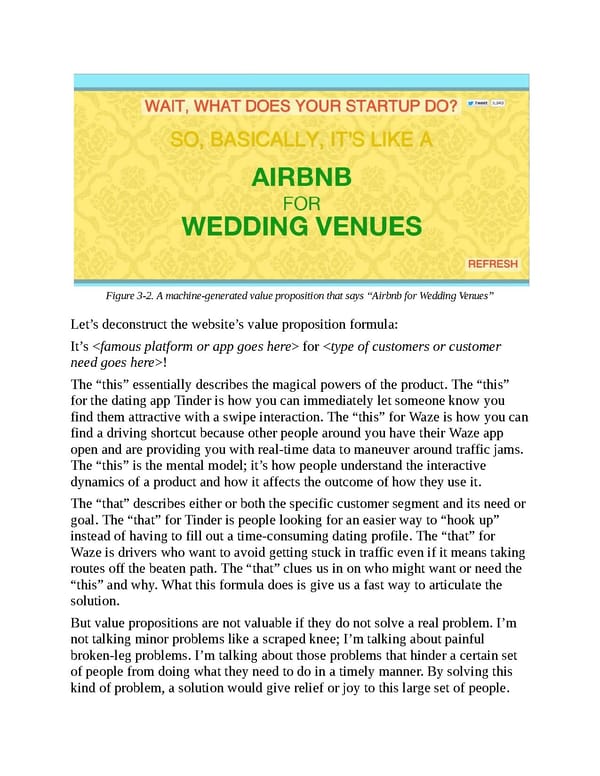Figure 3-2. A machine-generated value proposition that says “Airbnb for Wedding Venues” Let’s deconstruct the website’s value proposition formula: It’s for ! The “this” essentially describes the magical powers of the product. The “this” for the dating app Tinder is how you can immediately let someone know you find them attractive with a swipe interaction. The “this” for Waze is how you can find a driving shortcut because other people around you have their Waze app open and are providing you with real-time data to maneuver around traffic jams. The “this” is the mental model; it’s how people understand the interactive dynamics of a product and how it affects the outcome of how they use it. The “that” describes either or both the specific customer segment and its need or goal. The “that” for Tinder is people looking for an easier way to “hook up” instead of having to fill out a time-consuming dating profile. The “that” for Waze is drivers who want to avoid getting stuck in traffic even if it means taking routes off the beaten path. The “that” clues us in on who might want or need the “this” and why. What this formula does is give us a fast way to articulate the solution. But value propositions are not valuable if they do not solve a real problem. I’m not talking minor problems like a scraped knee; I’m talking about painful broken-leg problems. I’m talking about those problems that hinder a certain set of people from doing what they need to do in a timely manner. By solving this kind of problem, a solution would give relief or joy to this large set of people.
 UX Strategy: How to Devise Innovative Digital Products that People Want Page 57 Page 59
UX Strategy: How to Devise Innovative Digital Products that People Want Page 57 Page 59